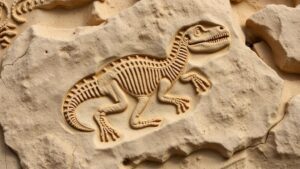Excavating crinoid fossils in the shallow seabed rock formations of Indiana.
Excavating Crinoid Fossils in the Shallow Seabed Rock Formations of Indiana
Indiana, often recognized for its varied geological landscape, is a treasure trove for rockhounds and mineral collectors. Among its many geological formations, the crinoid fossils nestled in the shallow seabed rock formations stand out as particularly intriguing. These ancient marine organisms, often referred to as sea lilies, provide valuable insights into the Earths history and present an exciting opportunity for collectors.
Understanding Crinoids
Crinoids are marine animals classified under the phylum Echinodermata, which includes sea stars and sea urchins. e creatures, which date back to the Cambrian period (over 500 million years ago), possess a crown of feathery arms that they use to filter food particles from seawater. Indiana, specifically its limestone deposits from the Mississippian period, showcases a rich assemblage of crinoid fossils.
Geological Background of Indianas Rock Formations
The rock formations in Indiana where crinoid fossils are predominantly found are part of the sedimentary deposits laid down during the Mississippian period, approximately 359 to 323 million years ago. These formations, primarily limestone, were formed in a shallow, warm marine environment. Over millions of years, the burial and lithification of these sediments have preserved crinoid fossils, often found in large concentrations.
Identifying Crinoid Fossils
Crinoid fossils can often be identified by their unique structural features. A few characteristics to look for include:
- The stem, which typically appears as a long cylindrical column.
- The holdfast, resembling a root structure that attached the crinoid to the seafloor.
- The crown, comprising a series of arms that extend outward and may resemble petals.
Many crinoid fossils found in Indiana can reach lengths of several inches, with their intricate patterns providing a clear visual representation of these ancient organisms. The coloration of the fossils varies significantly, often showing shades of gray, brown, or even red, depending on mineral content.
Best Locations for Fossil Excavation in Indiana
While crinoid fossils can be found throughout Indiana, some notable locations include:
- The Upper Mississippian limestone deposits near Bloomington.
- The bedrock along the White River.
- Quarries in the Indianapolis area which expose the limestone layers.
It’s essential to seek permission if entering private lands or operating in designated sites.
Excavation Techniques for Collectors
For those eager to unearth crinoid fossils, employing the correct excavation techniques can enhance your success. Here are some practical tips:
- Use hand tools like chisels and hammers to carefully extract fossils from the rock matrix.
- Soft brushes can help gently remove debris and reveal intricate details without damaging the fossil.
- Consider using a geological hammer for larger deposits, but ensure you prioritize safety with appropriate eyewear.
Also, patience is key; fossil hunting often requires time to detect potential fossils in the rock face.
Challenges and Conservation
Excavating crinoid fossils does come with its set of challenges. Weather conditions can affect accessibility, and erosion can obscure fossils. Also, ethical collecting practices must be adhered to, emphasizing the importance of conservation. Always be mindful of the impact your collecting efforts may have on the environment:
- Limit the amount of material you disturb.
- Document your finds responsibly, keeping in mind that some specimens may belong to protected sites.
Conclusion
Excavating crinoid fossils in Indiana offers rockhounds and mineral collectors a unique glimpse into a distant past. By understanding the geological background, employing effective excavation techniques, and following best practices for conservation, collectors can enjoy a fulfilling and rewarding experience. As you venture through Indiana’s rock formations, the discoveries you make will not only enhance your collection but also enrich your appreciation for Earth’s rich geological history.
Actionable Takeaways
- Research the geological formations before beginning your excavation.
- Equip yourself with the right tools and safety gear.
- Practice ethical collecting to help preserve these natural treasures.



